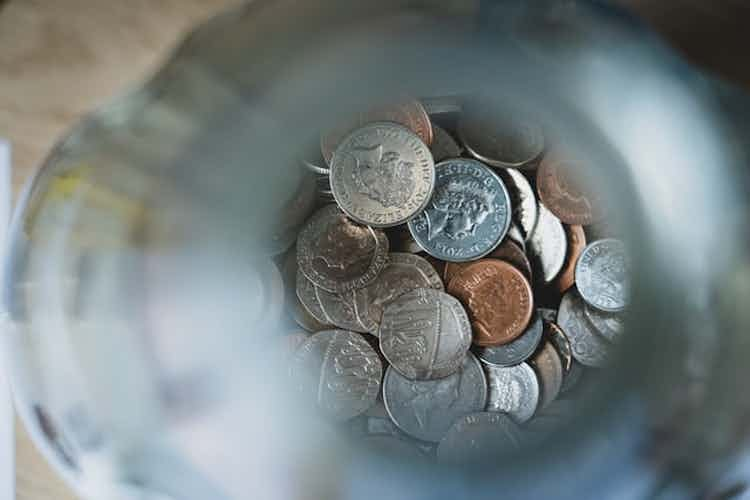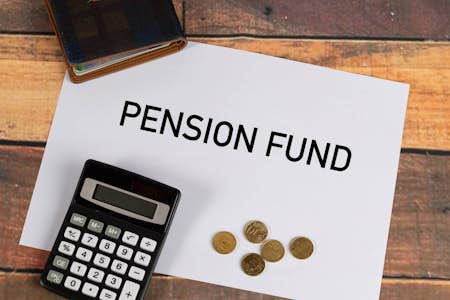Pensions are a significant commitment and can be a bit of a minefield. There are various pension plans offering differing contribution limits, fees, investment types, risk profiles and other terms and conditions.
There’s also scope for self-management of investment funds if choosing a self-invested personal pension (SIPP).
With consumers demanding more choice and control over their pensions, there are now more pension options than ever.
Maximise your retirement fund with our panel of pension providers. Click on your chosen provider to get started!
Choosing a pension yourself
You can always open a personal pension, even if enrolled in one or more workplace pension schemes.
Personal pensions offer an alternative for those who don’t have a workplace pension or opt-out. They’re the most common choice for self-employed individuals, too.
Choosing a pension plan
There are many considerations when it comes to choosing a pension plan:
- How will your pension fund be invested? Are you free to select your investments? Is this important to you?
- What does the plan offer in terms of contribution options? Can you pay in lump sums, pay in regular amounts, and can your employer contribute as well? Is there a minimum monthly contribution?
- How has the pension performed in the past?
- What are the charges?
- How can you control and manage your pension? Can you manage it from an online dashboard or account?
The more research you do before choosing a private pension, the better.
You may also wish to consider consulting a financial advisor.
What is the best private pension?
Private pensions are defined contribution pensions. That means you’ll receive an amount based on your contribution and your employer’s contributions where applicable and influenced by the performance of your pension investments.
Private pensions are a contract between you and the pension provider. They’re available to anyone regardless of employment status.
What is a private pension?
Private pensions, also known as personal or individual pensions, are different to state pensions and workplace pensions.
However, your employer can contribute to one and claim tax relief on those contributions. Other people can contribute too, and you can also contribute to other people’s private pensions, such as that of your partner or child.
Private pensions are invested into a range of assets, primarily property, cash, bonds and shares. There is a degree of risk associated with private pensions, but the general aim is to safeguard money whilst growing investments in the long term.
This helps your money outperform inflation.
How do private pensions work?
There are two main types of private pensions, and they’re both very similar in most ways.
- Standard personal pensions
- Self-invested personal pensions (SIPPs)
Stakeholder’s pensions are another less common option and are suitable for those who want to make small contributions. They also have fixed fees.
SIPPs vs personal pensions
There are two broad types of personal pensions; standard personal pensions and self-invested personal pensions (SIPPs).
Both are a type of defined contribution pension, so they’re both orientated around contributing your money towards investment options.
SIPPs are more flexible, allowing you to choose from funds, portfolios or individual investments. These often have higher fees than more routine hands-off personal pensions. Personal pensions are more straightforward; you just pay in, and the provider invests your money.
Tax relief works identically with personal pensions than it does with workplace pensions, so the maximum you can invest in a personal pension and claim tax relief on is 100% of your earnings, up to £40,000 a year.
There is also a lifetime allowance of £1,073,100 that you can build up in your pensions over your lifetime before paying additional tax.
SIPPs versus personal pensions
SIPPS:
- Allow you to select investment portfolios, usually from a selection of curated funds and shares.
- Provide a more varied selection of stocks that might attract you as someone with investment knowledge.
- Enable you to invest in ethical, green and sustainable funds, such as solar or wind power and avoid ‘sin stocks.’
- Select riskier funds that can provide higher growth and risk potential.
Personal pensions
- A hands-off approach to creating a personal pension pot.
- Still plenty of options from major and niche providers.
- Options for reducing ‘sin stocks’ and focussing on greener alternatives.
- Set-and-forget investment options that require little maintenance.
When can you withdraw money from a private pension?
The minimum retirement age is, however, expected to increase to 67 by 2028.
There are multiple options for taking money from your pot, including as a lump sum or in a ‘pension drawdown’ that allows you to keep the money invested whilst taking amounts as and when you want or need them.
The first 25% of your private pension lump sum is tax-free; the remainder is taxed as income for that year. You are, however, free to withdraw the entire thing in one go.
You’ll also usually be able to buy an annuity that pays you a regular income for a fixed period.
You can transfer private pensions to the beneficiaries of your will if you die before or during the pension scheme’s duration.
How can I take out a private pension?
The first step is to find and compare options. There are many options for this, including:
- Go Compare
- Money.co.uk
- Pension Wise
- Which?
- Money Saving Expert
- Good With Money
- Unbiased
It’s also worth noting that you can consolidate older pensions into one new private pension fund. This could be advantageous if your old pensions are stagnating in poor funds and you just want to manage them from one combined personal pension.
What's the best pension for self-employed people?
Self-employed individuals are most likely to choose a personal pension.
Personal pensions are suitable for all types of business owners.
If you work for yourself, then your future retirement savings are your responsibility. You may get a State Pension, but this is seldom enough to support most when they stop working.
The good news is that private pensions still provide tax relief on your earnings.
You will receive tax relief on pension contributions of 100% of your earnings up to a £40,000 annual allowance.
You can also claim additional tax relief on your Self Assessment tax return for any money you pay into a private pension of:
- 20% up to the amount of any income you have paid 40% tax on.
- 25% up to the amount of any income you have paid 45% tax on.
Types of pensions for self-employed people
Self-employed people can consider:
- Standard personal pensions
- SIPPs
- Stakeholder’s pensions
A final option is a NEST (National Employment Savings Trust) scheme. These are designed for self-employed people or sole traders/directors of companies who don’t employ others.
The most common and flexible option is the standard personal pension or SIPP. Stakeholder’s pensions are a ‘lightweight’ option for those that want a hands-off means to save for the long-term with a minimal contribution.
Pension tips for the self-employed
1. Get started soon
Many self-employed individuals worry about their retirement. The only surefire way to tackle this is to get started soon, even if you’re making minimal contributions. The self-employed should consider a stakeholder’s pension as these have low minimum contributions and low, fixed charges. They offer a simple way to start saving into a pension.
2. Don’t forget your State Pension
If you’re making National Insurance contributions, you’ll also qualify for a State Pension after ten qualifying years. 35 qualifying years secures you the highest state pension rate. If you’re not earning enough to make NI contributions automatically, you can contribute voluntarily to earn yourself qualifying years.
3. Consolidate old pensions
By tracking down and consolidating old pensions, you can create a new private pension from any smaller pensions you’ve accumulated over time, such as from part-time jobs.
How to choose a pension
Choosing a private pension might seem a complicated process, but if you’re self-employed or otherwise own your own business, your retirement is your responsibility.
The two main options are:
- Standard personal pensions.
- SIPPs.
Stakeholder’s pensions are a third option for those who want to make lower contributions (perhaps earlier in life).
There are many great resources to check out when searching for personal pensions; ensure you thoroughly research all your options!







